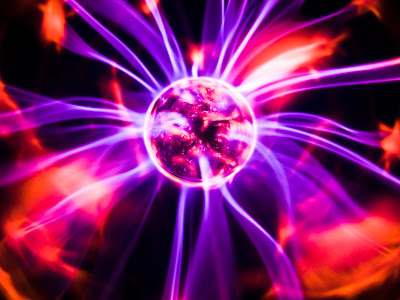 |
| [Picture Source: stock.xchng, "Raw Power1" (2008) by gun4fire] |
While teaching electric field at A-levels, we have a typical problem whereby we have two spherical conductors in which we connect a "long" wire across them. We then place a certain amount of charge onto the system and the charges with redistribute till they come to electrostatic equilibrium. (A similar problem can be found in Serway's "Physics for Scientists and Engineers
After the calculation, we may find some interesting results. The electrical charges collected on the larger sphere are in reality more than that of the smaller sphere. However the electric field at the surface of the smaller sphere is large. The electric field represents the force acting on per unit charge, and hence logically the larger the force the higher the probability of discharge. Hence I guess, the idea of more charges accumulating at a sharper point and hence greater probability of discharging, can be quite misleading....
PS: This article is a followup on a previous comment contributed which triggered this idea. It is possible to start off with the Windhurst machine activity and then follow up with the problem above and a discussion of breakdown voltage.
Problem 25.50 in Serway (6th Edition), pg 791:
Electric charge can accumulate on an airplane in flight. You may have observed needle-shaped metal extensions on the wing tips and tail of an airplane. Their purpose is to allow charge to leak off before much of it accumulates. The electric field around the needle is much larger than the field around the body of the airplane, and can become large enough to produce dielectric breakdown of the air, discharging the airplane. To model this process, assume that two charged spherical conductors are connected by a long conducting wire, and a charge of 1.20 micro-coulombs is placed on the combination. One sphere, representing the body of the airplane, has a radius of 6.00 cm, and the other, representing the tip of the needle, has a radius of 2.00 cm. (a) What is the electric potential of each sphere? (b) What is the electric field at the surface of each sphere?
No comments:
Post a Comment